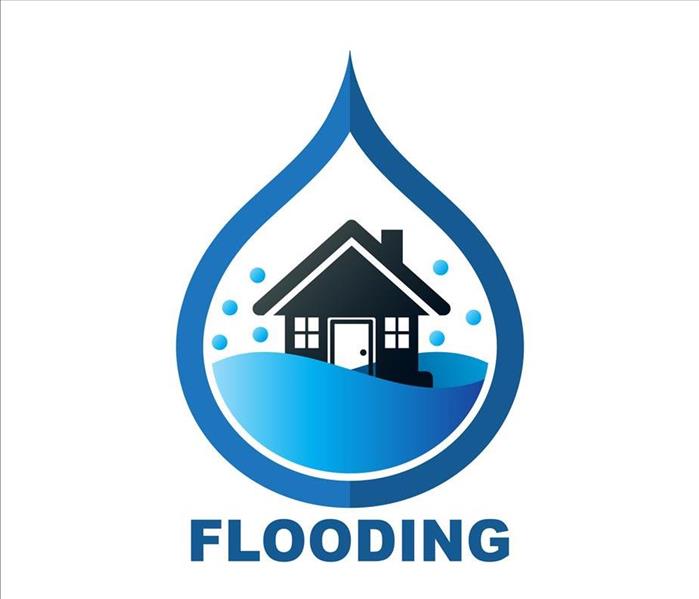How Can I Prepare My Property for Flood Damages?
7/23/2020 (Permalink)
Disaster Mitigation Professionals Mitigate Flood Damage in Glen Head Residences for Both Structures and Contents
Flooding is one of the most ubiquitous natural disasters in the United States today. Glen Head residents who have suffered such damages are well aware of the significant costs created by debris, pests, sewage, and water damage created by floodwaters. One inch of water can cause as much as $25,000 in damages to a home.
The restoration technicians at SERVPRO are available 24 hours a day, seven days a week, to remove flood damage from Glen Head properties and return homes to a preloss state. SERVPRO emergency response crews can begin the cleanup process in as little as four hours after you call.
How Do I Determine Whether or Not I Live in a Flood Zone?
Glen Head homeowners can access local flood maps to determine their flood risk. The Federal Emergency Management Agency (FEMA) keeps an online flood map of the United States open for public use.
Here is how to read the map to determine your area’s general flood risk:
- First, enter your location. This entry can be a city or ZIP code. You can then view the web map and even find reports for your area’s flood history.
- To determine the flood risk in your area, the FEMA Flood Map Service uses a variety of zone markings that indicate both risk levels and infrastructure relevant to flood management, including bridges, levees, and dams.
- Flood zone risk is coded as follows:
- Blue zones are 1% annual chance regions. In other words, FEMA expects these areas to see significant flooding at least once every century. FEMA considers this a high-risk designation and advises homeowners to floodproof their properties.
- Orange zones are 0.2% annual chance zones–that is, significant flooding is expected to occur here at least once every 500 years. This occurrence may seem unlikely to happen in your lifespan, but the truth is that every single region of the United States, no matter how arid, experiences flooding.
- Yellow zones indicate an undetermined flood risk. You may need to do more research to find out more about a yellow zome’s flood history.
- Blue zones with red stripes are regulatory floodways usually composed of rivers and surrounding floodplains. Homes that are built in or near these areas should exercise great caution to minimize the impact that flooding can cause in these regions.
How Can I Prepare My Home for Flooding?
There are numerous renovation options you can undertake that can reduce the impact of flood damage for your Glen Head property. These can include:
- Install a sump pump or foundation vents. Sump pumps are mostly used to remove water from basements. Choose a model with a battery backup to ensure that it can operate after the power goes out.
Foundation vents, meanwhile, allow floodwater to pass through your foundation instead of pooling around it. This floodproofing tactic can alleviate the significant amount of pressure created by accumulated floodwaters. - Use check valves on your home’s pipes. The pipes entering your home should have valves installed to prevent sewage from backing up into your drains and fixtures. Gate valves typically provide a tighter seal for this purpose than flap valves.
- Elevate your electrical switches, outlets, and wiring. Keep electrical components on your property at least 12 inches above flood level. This step can minimize the risk of an electrical shock during a flood.
- Keep some space between mulch and siding. Consistent contact with wet mulch can eventually cause your home’s siding to rot. Once this occurs, it is much easier for floodwaters and other types of damage to penetrate your structure. Keeping some space between mulch on your property and your siding keeps the base of your home dry.
- Make use of sealants and coatings. This floodproofing strategy protects your home with an outer coating of water-resistant paints and sealants that prevent water from seeping into cracks and crevices.
How Do SERVPRO Professionals Mitigate Flood Damage?
Flood damage requires a different process for mitigation and restoration than the typical home water damage situation due to the presence of contaminants and debris in the water. Solid waste, pests, chemical runoff, and other items must be removed from the property before structural drying can begin in earnest.
Porous materials like carpet and mattresses typically require disposal with the assent of homeowners and insurance adjusters due to safety concerns. SERVPRO technicians focus on thorough sanitation before commencing with structural drying to prevent the spread of mold, microbes, and other potential contaminants through the air.
SERVPRO of Glen Cove / Jericho provides mitigation and restoration services that make disaster-affected homes look, “Like it never even happened.” Call (516) 671-1919 to begin the cleanup process within hours, at any time of the day or night.






 24/7 Emergency Service
24/7 Emergency Service